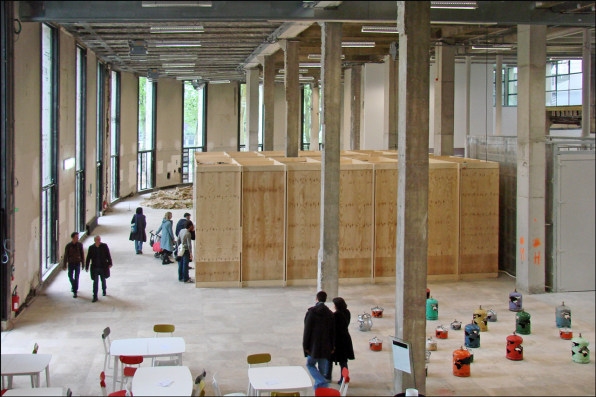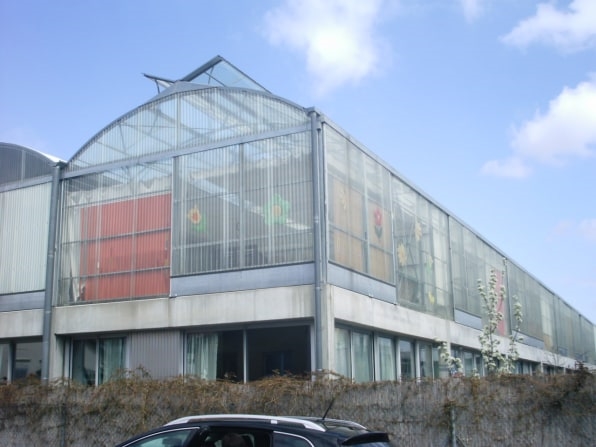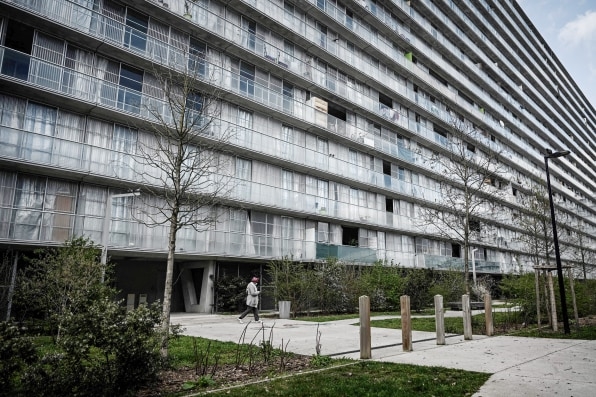Starting out as an architect in the 1990s, I was so eager for work, and excited about the creative possibilities, that turning down a project seemed inconceivable. It was thrilling, then, at a conference a few years ago, to hear French architects Anne Lacaton and Jean-Philippe Vassal explain how they had done just that.
When the city of Bordeaux, in France, commissioned the duo—this year’s Pritzker Prize laureates—to redesign one of the town’s plazas, they started by observing the space closely. Their conclusion was that the Place Léon Aucoc was a vibrant community space that didn’t need changing.
The city wanted to embellish the space, but, they said, it was already beautiful. It was well built, authentic, unsophisticated: It made sense. The people who lived there felt at home. “It made us wonder,” they write, “what embellishment means, what purpose it serves?” So they proposed doing nothing other than maintenance work that would satisfy the inhabitants: more regular cleaning, better care for the lime trees around the edges, replacing the gravel.
In a world in which flamboyance and style have long determined how an architect becomes a star, this approach—doing nothing—is an act of resistance. The fact that, 30 years into their career, Lacaton and Vassal have now been awarded the built environment’s equivalent of the Nobel Prize is a revolution. As the jury put it, Lacaton and Vassal have not only renewed the legacy of modernism: they are redefining architecture itself.

[Photo: Flickr user Jean-Pierre Dalbéra]
This represents an institutional shift to what I have called a “Gaia-centred” approach to architecture. In my book, Architectural Materialisms: Nonhuman Creativity, I discuss how this idea of architecture places designing and building within a broader ecology that includes everything around it—from flora and fauna to questions of gender and data. It does not center humans but instead recasts them simply as one of many agents. Crucially, it derives its aesthetics, as Lacaton and Vassal systematically demonstrate, from its ethics and its politics.
Starchitect history
Launched 42 years ago, the Pritzker Prize was initially intended to encourage greater awareness of how we perceive and interact with our surroundings. However, it has mostly lauded what we now know as starchitects: almost always men (Zaha Hadid was the first woman to win, in 2004; Lacaton is only the sixth) whose personal brand is as important as any extraordinary building they might design.
As the wider industry shifts towards responding to social, climatic, and environmental emergencies, however, it appears the Pritzker is switching gears too. In 2020, the Irish architects Yvonne Farrell and Shelley McNamara won for their consistent service to humanity—buildings, the jury said, that were “good neighbors” and environmentally responsible.
Until now, ecological awareness in architecture has been recognized through certification, not awards. And buildings—not the architects who design them—have been the recipients. In other words, working in this way has come with few accolades.

[Photo: Flickr user bruno cerejo henriques]
Certifying a building makes sense because it is a one-off product of a process. It can be accurately judged. There are two internationally recognized certifications—BREEAM and LEED—which are both designed to assess the sustainability (from energy and water efficiency to CO2 emissions) of any given project.
Judging an architect’s entire process, though, is trickier. The German architect Thomas Herzog is widely considered the pioneer of sustainable architecture. But few others can prove their sustainability credentials for everything they undertake.
Redefining value
I have observed that there isn’t much overlap between these two markers of excellence—the architects awarded a Pritzker versus the architects designing BREEAM or LEED-certified buildings. This raises an important question about what we actually value in architecture. A direct connection has been made until now between iconic starchitecture and global capitalism. Lacaton and Vassal’s practice provides a bold alternative.
The French duo’s motto is “never demolish.” This principle is about paying attention and valuing what exists. They can lose out in competitions, they’ve said, because they can’t say what the final building will look like until they’ve uncovered everything they have to work with.

[Photo: Philippe Lopez/AFP/Getty Images]
Characteristically, when the pair find trees on a site, they build around them (Cap Ferret House, Arcachon). When commissioned to demolish and rebuild (the 1960s Bois le Prêtre tower in Paris) they decline or suggest lighter interventions. When refurbishing social housing (the Cité du Grand Parc social housing towers in Bordeaux), they do so without displacing the community that lives there.
Theirs is architecture grounded in a deep-seated political awareness that precludes beauty for beauty’s sake. Instead, the beauty comes from the way the architecture is conceived, designed, and constructed with people and planet in mind.
Such ideas are not new. In 2014, as curator of the Venice Biennale, the Dutch architect Rem Koolhaas advocated for a return to the fundamentals. He challenged participants in the biennale to think about what architecture does as opposed to who architects are.
Where Koolhaas’s theme was about reconnecting to architectural history, Lacaton and Vassal’s approach is to look at the actual structures and networks on the ground and how they can be retained and reused, out of concern for the future.
The Pritzker jury honed in on the way the French pair’s urban housing projects, in particular, respond to the crises we face. I have found that architects and clients both, on the contrary, are too often seduced by eccentric, expensive shapes and the promises of experimental technology. They miss the point that architecture’s primary function is to do exactly what Lacaton and Vassal are doing, and respond to the social, political, and environmental context in which it is built.
The question now is where the younger generation takes these ideas. Will Lacaton and Vassal’s humble approach to reuse and low-key interventions be widely adopted? How might it serve emptying post-pandemic cities? Might their limelight bolster those architects working in the shadows to respond to the climate crisis?
Maria Vogiatzaki is a professor at Anglia Ruskin University. This article is republished from The Conversation under a Creative Commons license. Read the original article.
(46)